BRIEF DICUSSION ABOUT GAS GIANTS.
A gas giant is a large planet composed mostly of gases, such as hydrogen and helium, with a relatively small rocky core. The gas giants of our solar system are Jupiter, Saturn, Uranus and Neptune. These four large planets, also called jovian planets after Jupiter, reside in the outer part of the solar system past the orbits of Mars and the asteroid belt. Jupiter and Saturn are substantially larger than Uranus and Neptune, and each pair of planets has a somewhat different composition.
Although there are only four large planets in our solar system, astronomers have discovered thousands outside of it, particularly using NASA's Kepler Space Telescope. These exoplanets (as they are called) are being examined to learn more about how our solar system came to be.
Basic facts
Jupiter is the largest planet in our solar system. It has a radius almost 11 times the size of Earth. It has 50 known moons and 17 waiting to be confirmed, according to NASA. The planet is mostly made of hydrogen and helium surrounding a dense core of rocks and ice, with most of its bulk likely made up of liquid metallic hydrogen, which creates a huge magnetic field. Jupiter is visible with the naked eye and was known by the ancients. Its atmosphere consists mostly of hydrogen, helium, ammonia and methane. [Related: Planet Jupiter: Facts About Its Size, Moons and Red Spot]
Saturn is about nine times Earth's radius and is characterized by large rings; how they formed is unknown. It has 53 known moons and nine more awaiting confirmation, according to NASA. Like Jupiter, it is mostly made up of hydrogen and helium that surround a dense core and was also tracked by ancient cultures. Its atmosphere is similar to Jupiter's. [Related: Planet Saturn: Facts About Saturn’s Rings, Moons & Size]
Uranus has a radius about four times that of Earth's. It is the only planet tilted on its side, and it also rotates backward relative to every planet but Venus, implying a huge collision disrupted it long ago. The planet has 27 moons, and its atmosphere is made up of hydrogen, helium and methane, according to NASA. It was discovered by William Herschel in 1781. [Related: Planet Uranus: Facts About Its Name, Moons & Orbit]
Neptune also has a radius about four times that of Earth's. Like Uranus, its atmosphere is mostly made up of hydrogen, helium and methane. It has 13 confirmed moons and an additional one awaiting confirmation, according to NASA. It was discovered by several people in 1846. [Related: Planet Neptune: Facts About Its Orbit, Moons & Rings]
Super-Earths: Scientists have found a multitude of "super-Earths" (planets between the size of Earth and Neptune) in other solar systems. There are no known super-Earths in our own solar system, although some scientists speculate there may be a "Planet Nine" lurking in the outer reaches of our solar system. Scientists are studying this category of planets to learn whether super-Earths are more like small giant planets or big terrestrial planets.
Formation and similarities
Astronomers think the giants first formed as rocky and icy planets similar to terrestrial planets. However, the size of the cores allowed these planets (particularly Jupiter and Saturn) to grab hydrogen and helium out of the gas cloud from which the sun was condensing, before the sun formed and blew most of the gas away.
Since Uranus and Neptune are smaller and have bigger orbits, it was harder for them to collect hydrogen and helium as efficiently as Jupiter and Saturn. This likely explains why they are smaller than those two planets. On a percentage basis, their atmospheres are more "polluted" with heavier elements such as methane and ammonia because they are so much smaller.
Scientists have discovered thousands of exoplanets. Many of these happen to be "hot Jupiters," or massive gas giants that are extremely close to their parent stars. (Rocky worlds are more abundant in the universe, according to estimates from Kepler.) Scientists speculate that large planets may have moved back and forth in their orbits before settling into their current configuration. But how much they moved is still a subject of debate.
There are dozens of moons around the giant planets. Many formed at the same time as their parent planets, which is implied if the planets rotate in the same direction as the planet close to the equator (such as the huge Jovian moons Io, Europa, Ganymede and Callisto.) But there are exceptions.
One moon of Neptune, Triton, orbits the planet opposite to the direction Neptune spins — implying that Triton was captured, perhaps by Neptune's once larger atmosphere, as it passed by. And there are many tiny moons in the solar system that rotate far from the equator of their planets, implying that they were also snagged by the immense gravitational pull.
Current research
Jupiter: NASA's Juno spacecraft arrived at the planet in 2016 and has already made several discoveries. It studied the planet's rings, which is difficult to achieve since they are far subtler than Saturn's. Juno discovered that the particles influencing the auroras of Jupiter are different than those on Earth. It also revealed insights about the atmosphere, such as finding snow emanating from high-altitude clouds. Meanwhile, scientists using the Hubble Space Telescope have made detailed studies of Jupiter's Great Red Spot, watching it shrink and intensify in color.
Saturn: The Cassini spacecraft wrapped up more than a dozen years of observation at Saturn in 2017. But the science Cassini performed is still very much in progress, as scientists analyze work from its many years at Saturn. In its latter months, the mission examined Saturn's gravity and magnetic fields, looked at the rings from a different angle than before, and plunged into the atmosphere deliberately (a move that will reveal more about the structure of the atmosphere.)
Uranus: The storms of Uranus are a frequent target for both professional telescopes and amateur astronomers, who monitor how they evolve and change over time. Scientists are also interested in learning about the structure of its rings, and what its atmosphere is made of. Uranus may also have several Trojan asteroids (asteroids in the same orbit as the planet); the first was found in 2013.
Neptune: Storms on Neptune are also a popular observing target, and in 2018 those observations again bore fruit; work from the Hubble Space Telescope showed that a long-standing storm is now shrinking. The researchers noted the storm is dissipating differently than what their models expected, which shows that our understanding of Neptune's atmosphere still requires refinement.
Exoplanets: Many ground telescopes search for exoplanets. There are also several active space missions performing exoplanet research, including Kepler, the Hubble Space Telescope and the Spitzer Space Telescope. A flurry of new missions is also planned: the NASA Transiting Exoplanet Survey Satellite (TESS) in 2018, the NASA James Webb Space Telescope in 2020, the European Space Agency's PLAnetary Transits and Oscillations of stars (PLATO) in 2026 and ESA's Atmospheric Remote-sensing Infrared Exoplanet Large-survey mission (Ariel) in 2028.
Additional resources
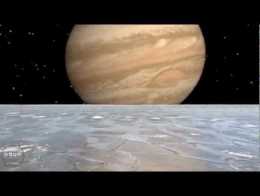
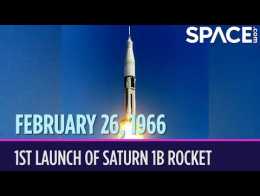
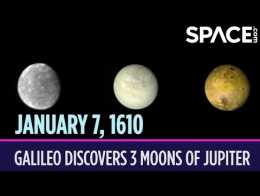
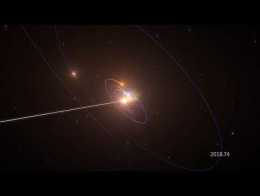
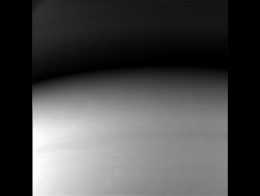
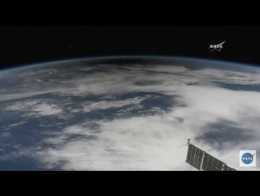
Comments
Post a Comment